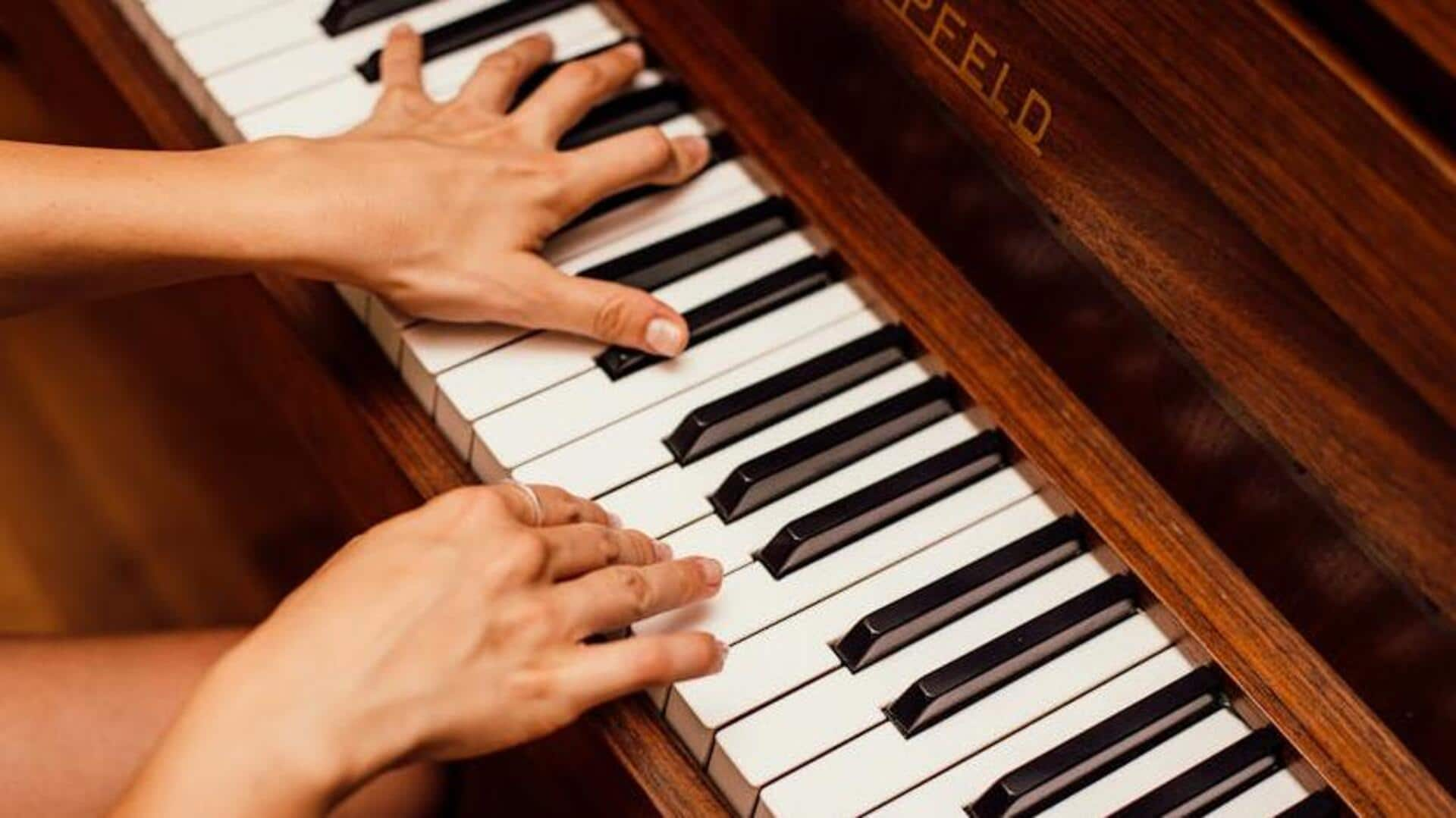
For pianists: 5 finger exercises to boost speed and agility
What's the story
Improving piano skills requires dedication and consistent practice. Effective finger exercises can significantly enhance abilities by building strength, flexibility, and coordination in the fingers, which are essential for efficient piano playing. Regularly incorporating these exercises into your daily practice routine can lead to noticeable improvements in both technique and overall performance. This guide presents five key finger exercises designed to develop better piano skills.
Lift exercise
Finger lifts for strength
Finger lifts are a simple yet effective exercise to build finger strength. Just place your hand flat on a table or any hard surface (with fingers spread slightly apart). Lift each finger one at a time (while keeping the others pressed down). Repeat this process several times for each hand. The exercise would help strengthen individual fingers, making it easier to play complex pieces with precision.
Scale routine
Scales practice for flexibility
Practicing scales is the key to improving finger flexibility and agility on the piano. Start by playing major and minor scales slowly, concentrating on evenness and clarity of sound. Gradually pick up speed as you get comfortable with the movements. Regular scale practice not only enhances flexibility but also improves muscle memory, allowing smoother transitions between notes.
Hanon drills
Hanon exercises for coordination
Hanon exercises are famous for improving the coordination between fingers of pianists. These drills include repetitive patterns that require perfect timing and careful movement of every finger. By practicing Hanon exercises regularly, pianists can considerably improve their coordination. This makes it a lot easier to play complex compositions effortlessly, making performances more fluid and effortless.
Arpeggio practice
Arpeggios for fluidity
Arpeggios mean playing notes of a chord one after the other instead of all at once, which helps you gain fluency across the keyboard. Start with simple arpeggios at a slow pace before moving onto complicated ones with multiple octaves or inversions. Regular arpeggio practice improves both speed and precision when moving between chords in a performance.
Trill technique
Trill exercises for dexterity
Trill exercises emphasize quick alternation between two neighboring notes with varying pairs of fingers—usually index-middle or middle-ring combos. This is done to hone dexterity required when playing trills in pieces smoothly without breaking tempo or rhythm consistency during performances.